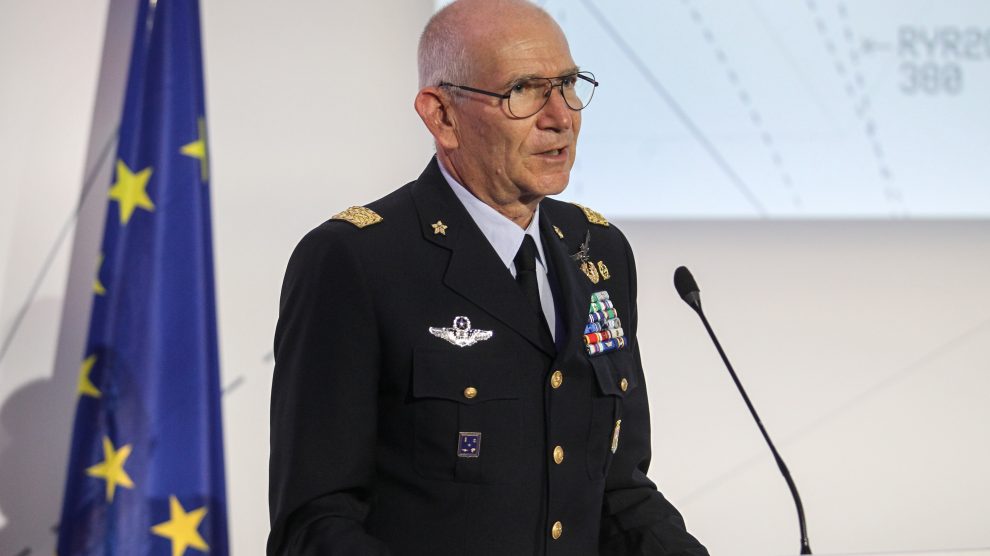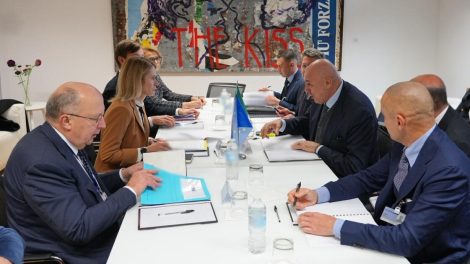“In 2030, all in all, we will have 150 combat aircrafts.” General Alberto Rosso, Chief of Staff of the Italian Air Force, underscored that the quality of the country’s Defence also depends on the number of assets the Armed Forces can field in an interview with the Italian daily La Repubblica.
The general warned that just seventy-five F-35s are slated to replace 236 fighters. Furthermore, “practically all AMX fighter-bombers will leave service [in 2021], while the remaining forty Tornadoes have been flying for 45 years.”
Suddenly losing this many aircrafts implies a loss of operability and intervention effectiveness across all domains, he remarked. But the Air Force’s future will also be dictated by technological prowess, connectivity and a sleuth of futuristic-sounding assets.
Less planes, more challenges
General Rosso voiced concern for the deterioration of the global geopolitical context, which is increasingly unpredictable and volatile. He told Repubblica that the decisions that brought to today’s dwindling number of planes were taken amid a different international scenario, less ridden with tensions.
He went on to mention NATO’s withdrawal from Afghanistan, the intensification of global competition between the United States and China and the assertiveness shown by several actors on the Eastern and Southern flanks of the Euro-Atlantic space. Those are all challenges that require a constant commitment from the Defence, especially through planes, which are simply indispensable to any type of operation.
The Tempest
If on one hand the Air Force’s aircrafts are decreasing, on the other the level of innovation of new aeronautical projects is shooting upwards. That’s the case with the Tempest fighter jet. A collaboration between Italy and the United Kingdom, the Tempest program is based on a distributed network of sensors and platforms, capable of exchanging real-time data with all the assets involved.
As General Rosso explained to La Repubblica, the technological solutions of the next twenty years will lead to a completely new approach. “We do not rule out the fact that the Tempest could be capable of flying with or without a pilot.” He also rebuted the criticism that was levelled at the Air Force for its decision to arm its drones. “Nothing changes!” he quipped, “there are always two people at the controls who take decisions.”
The hypersonic threat
Very recent developments brought the threat of hypersonic systems to the fore of public conversation. Especially those being developed by international players, chiefly China and Russia. “[This] will become a new area of responsibility for the Air Force; we cannot be caught unprepared,” said General Rosso.
Tackling this problem means developing a range of abilities and become capable of monitoring, identifying, following and ultimately engaging and destroying vehicles that fly at an altitude of 60-70 kilometres at speeds much higher than that of sound.
Innovation and technology
To achieve this and other goals the key is to bet on innovation and try to anticipate the future. The latter hinges on capabilities such as those integrated in the F-35 and Conformal Airborne Early Warning (CAEW) vehicles: multi-sensor systems with air surveillance, command, control and communications functions, instrumental to air supremacy and support to ground forces.
General Rosso also talked of stratospheric platforms, airship-like vehicles capable of flying above 20.000 metres of altitude and over a given area for months in an almost geostationary state. They may be thought of as “atmospheric satellites” capable of improving connectivity and surveillance over extremely large areas.
The Defence’s investments
The Ministry of Defence wholeheartedly welcomed the need for investment and development with the recent presentation of the Multiannual Planning Document (DPP), covering the three-year period from 2021 to 2023 and bringing more funds to the table.
The DPP entails 85 programs up to 2023 and roughly €26.5 billion. As Defence Minister Lorenzo Guerini illustrated, seven of these programs are considered priorities due to their high technological value and strategic contribution to future scenarios. The Tempest program and the radar for missile systems stand out among the priorities.





